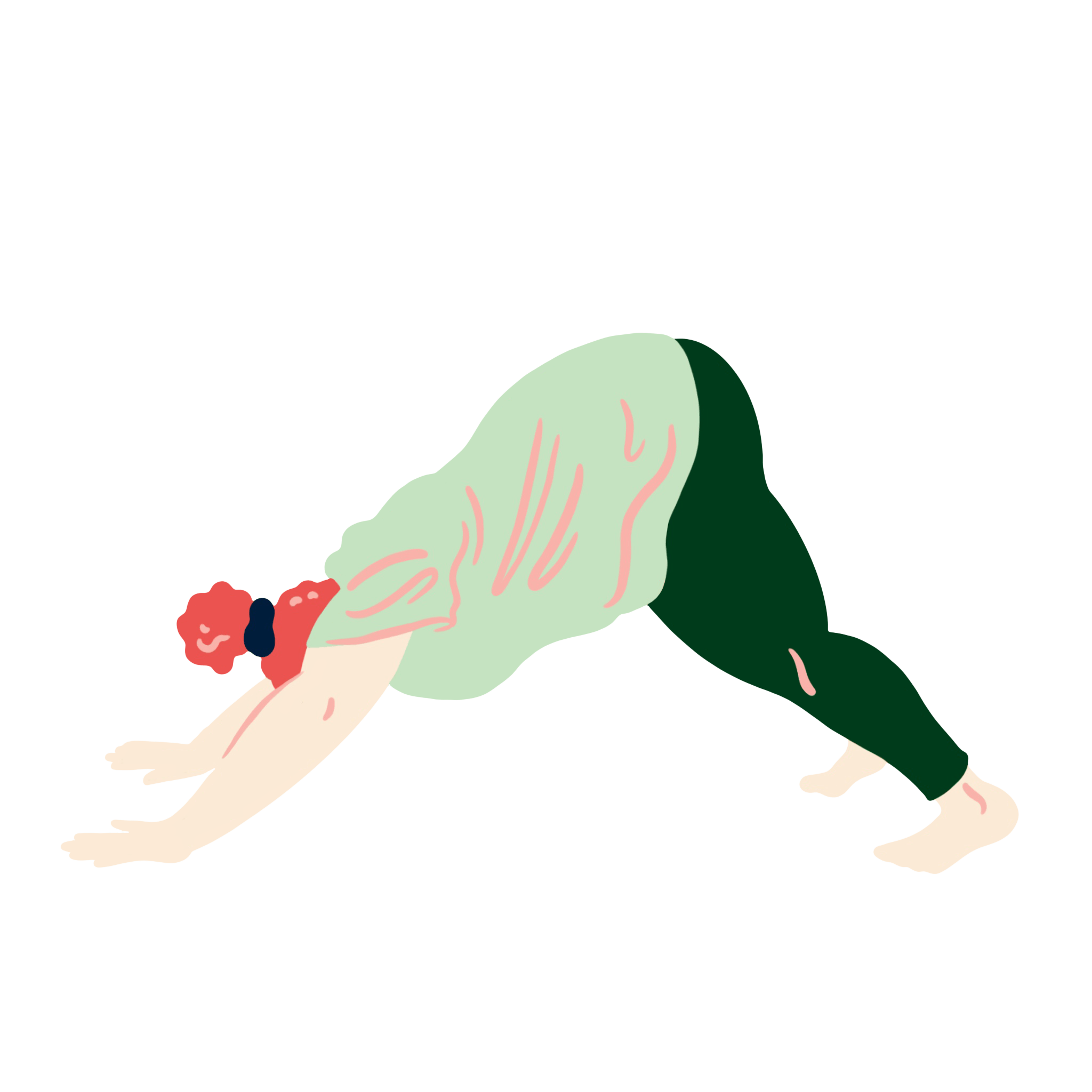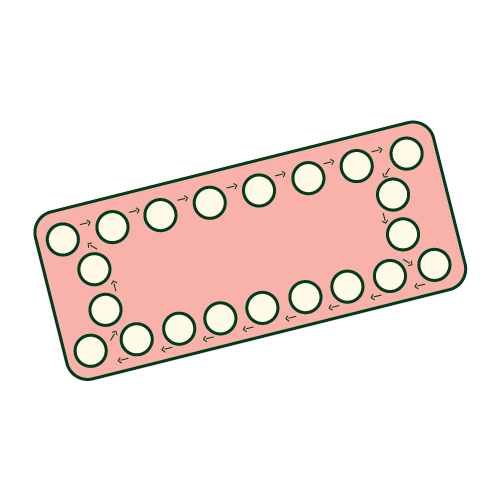Table of contents
1. How can you deal with endometriosis?
2. Painkillers
3. TENS machines
4. Yoga and Pilates
5. Hormonal treatment
6. Surgery
7. Emotional support
Illustrated by Sabrina Bezerra, Erin Rommel & Ralitza Nikolova
Although we’re all gradually learning more and more about endometriosis, dealing with this chronic condition is still something many people struggle with due to its incurable nature.
It’s important to remember that everyone is different — everyone will have different ways of dealing with endometriosis, and the condition will manifest differently for everyone — but we hope some of these coping mechanisms will help anyone whose everyday life is adversely impacted by endometriosis.
How can you deal with endometriosis?
Dealing with endometriosis mostly involves zeroing in on pain relief, due to the many forms of pain the condition can manifest. Those suffering with endometriosis may also experience pain during (or after) sex or other forms of pain — but pain isn’t the only symptom, and the condition can be managed via other means, too.
But we’ll kick things off with pain relief options, for all those who are doubled over in pain during periods, sex or any other time:
Painkillers
- Whether it’s an NSAID like ibuprofen or another painkiller altogether, make sure to have it on hand (only take painkillers in accordance with guidelines specified by the manufacturer) — especially during your period.
- If you don’t want to take an NSAID, you could opt for a general analgesic like paracetamol.

TENS machines
The ‘TENS’ stands for ‘Transcutaneous Electrical Nerve Stimulator’.
- The machines are small and subtle (they can also be portable), and operate via electrodes that you can place on the skin and which transmit electrical pulses into the body. It sounds dramatic, but it doesn’t hurt (you don’t need any more pain in your life if you suffer with endometriosis!): it just feels ticklish.
- Clip it to your belt, or just hold it in place: but always check with your GP before using a TENS machine, as they might not be suitable for everyone depending on pre-existing conditions.
Yoga and Pilates
- If you suffer with endometriosis (or suspect you might have the condition), it’s best to check with your GP before undertaking any new exercise program. Assuming your GP gives you the ok, we’d recommend giving yoga and/or Pilates a go.
- Both forms of exercises focus on breathing, which is a good way to calm the mind and release tension: and this in itself can be an effective form of pain relief, especially if your womb is tense and contracting heavily during your period.
- Plus, exercise releases endorphins: which in itself can be a great pain reliever.

Hormonal treatment
- While this option may help relieve symptoms such as pain, this is less of a pain relief option and more a way of preventing the endometriosis growing. Endometriosis responds to oestrogen: so a form of contraception (or alternative hormonal treatment) that blocks oestrogen can be an effective way to deal with endometriosis.
- If this is something you want to pursue, you should speak to your GP about your options — but common forms of hormonal contraception include the combined pill (which suppresses ovulation) or the Mirena coil.
- You could also opt for the progesterone route (such as the IUS or the implant) or an alternative hormonal treatment, like Danazol (which helps the body mimic the menopause).

Surgery
- You might need (or opt for) surgery to remove the patches of endometrial tissue that have grown on organs. This is called a laparoscopy.
- If the laparoscopy and all other treatment options are unsuccessful — and if you don’t want to get pregnant at any time in the future — you might be able to consider an operation to remove the organs affected (or just parts of them), such as a hysterectomy.
Emotional support
- Endometriosis can make everyday life very hard, whether due to the pain or the other symptoms (which include fatigue, heavy periods, nausea, constipation and/or diarrhoea and difficulty getting pregnant).
- So it’s important to seek out emotional support wherever you’re able; whether that’s through speaking to friends and family, taking time off work or just taking time to yourself, or through approaching your GP about possible medication options if you start to experience feelings of depression or anxiety.






